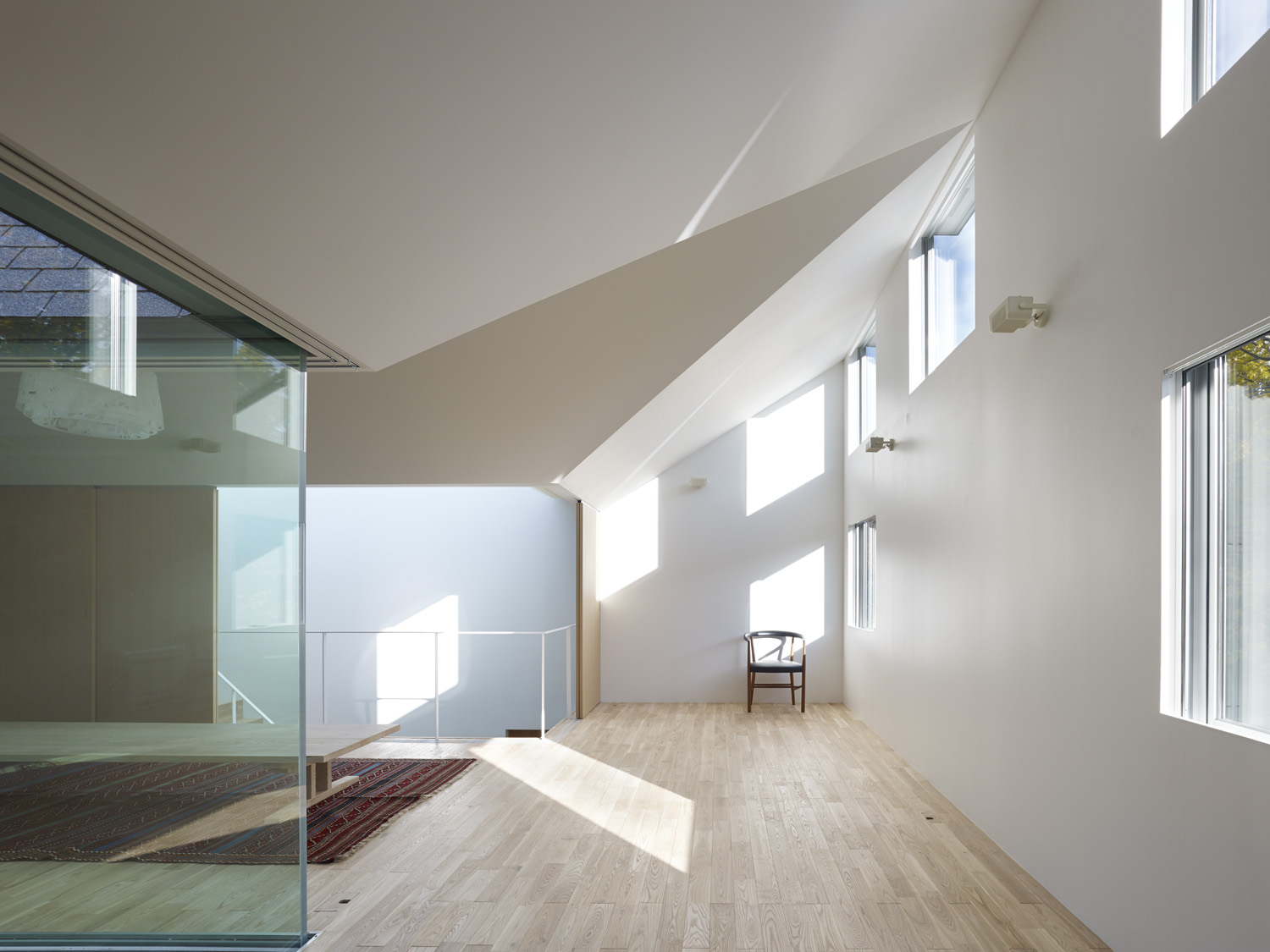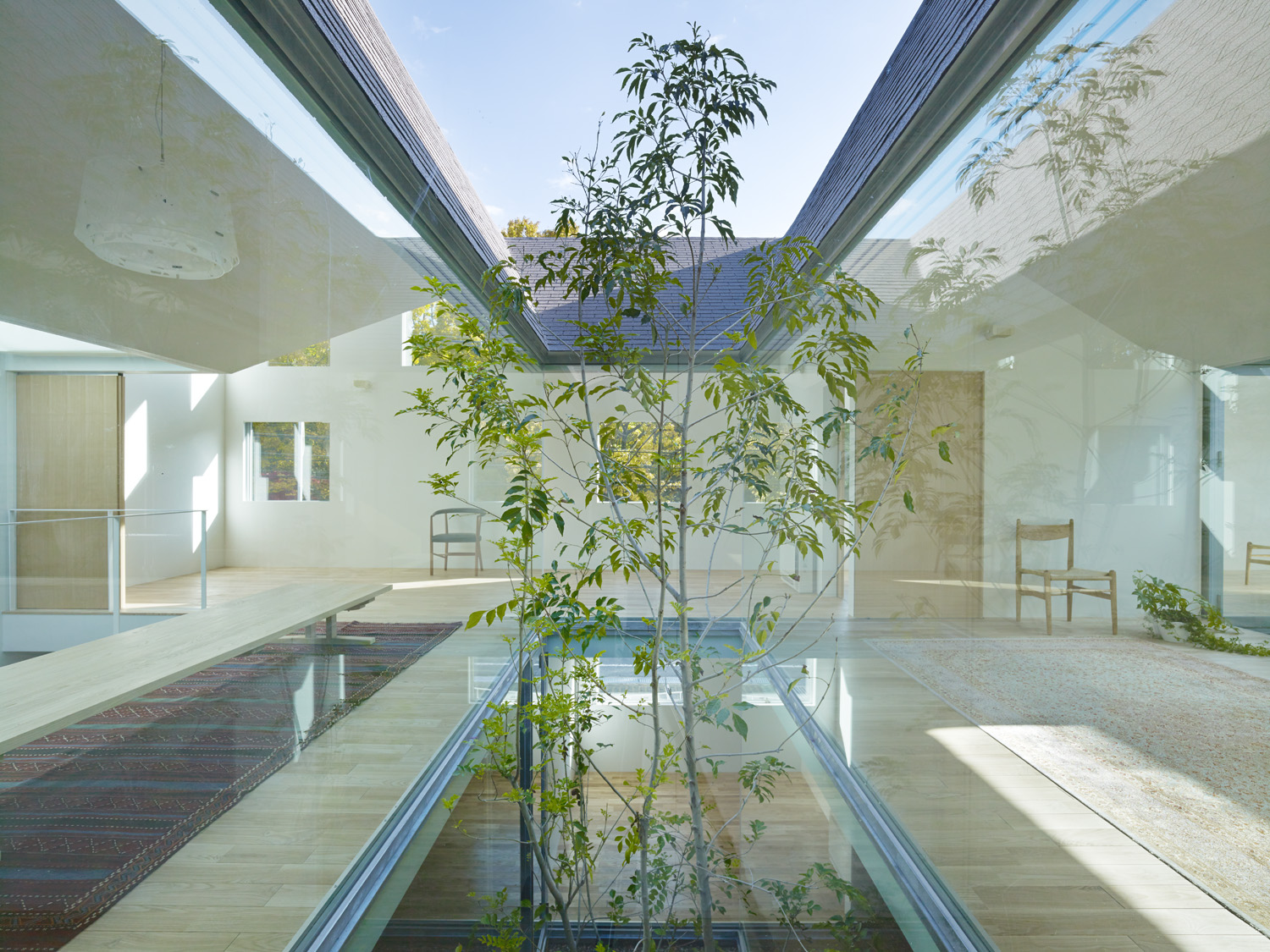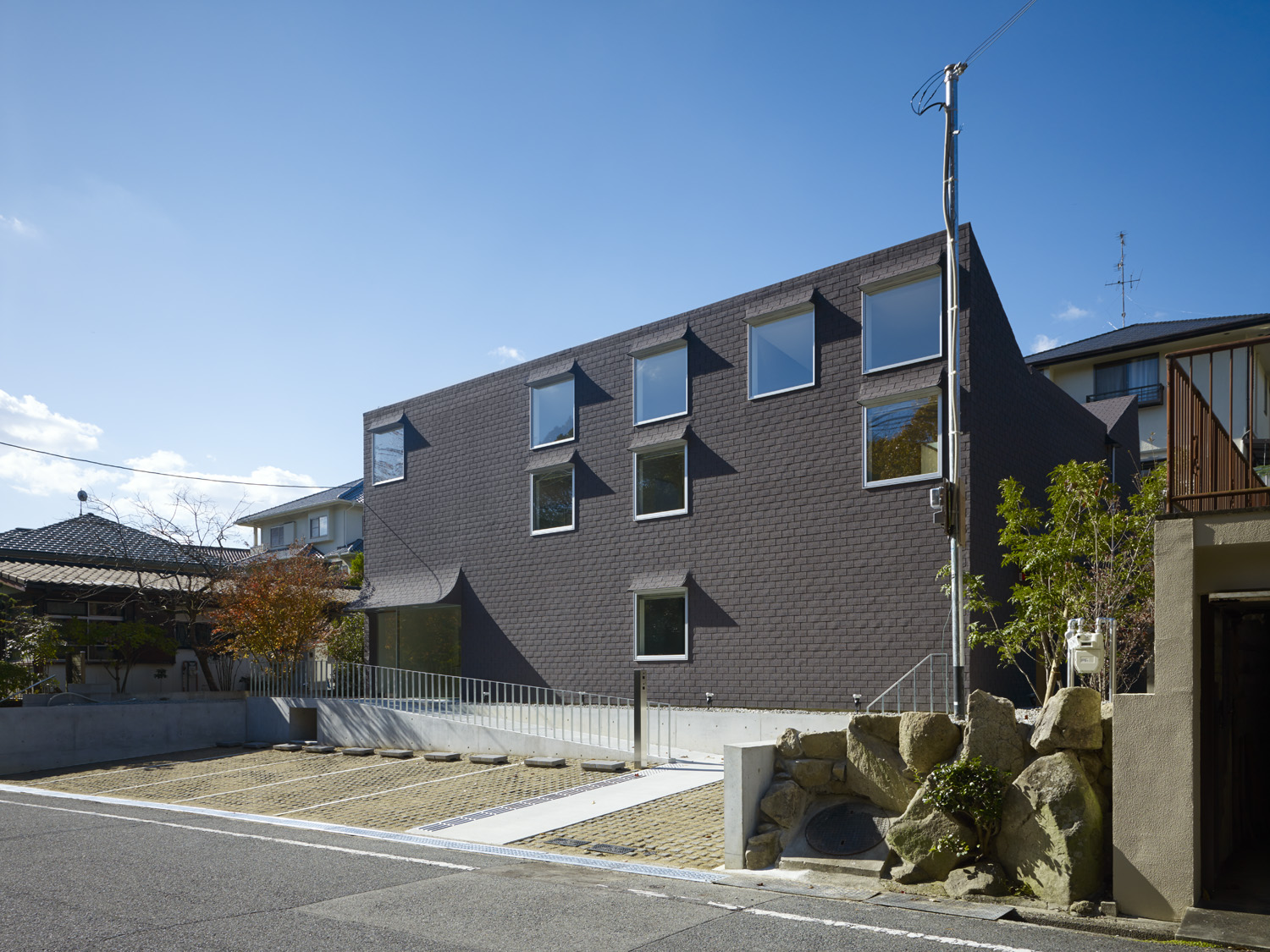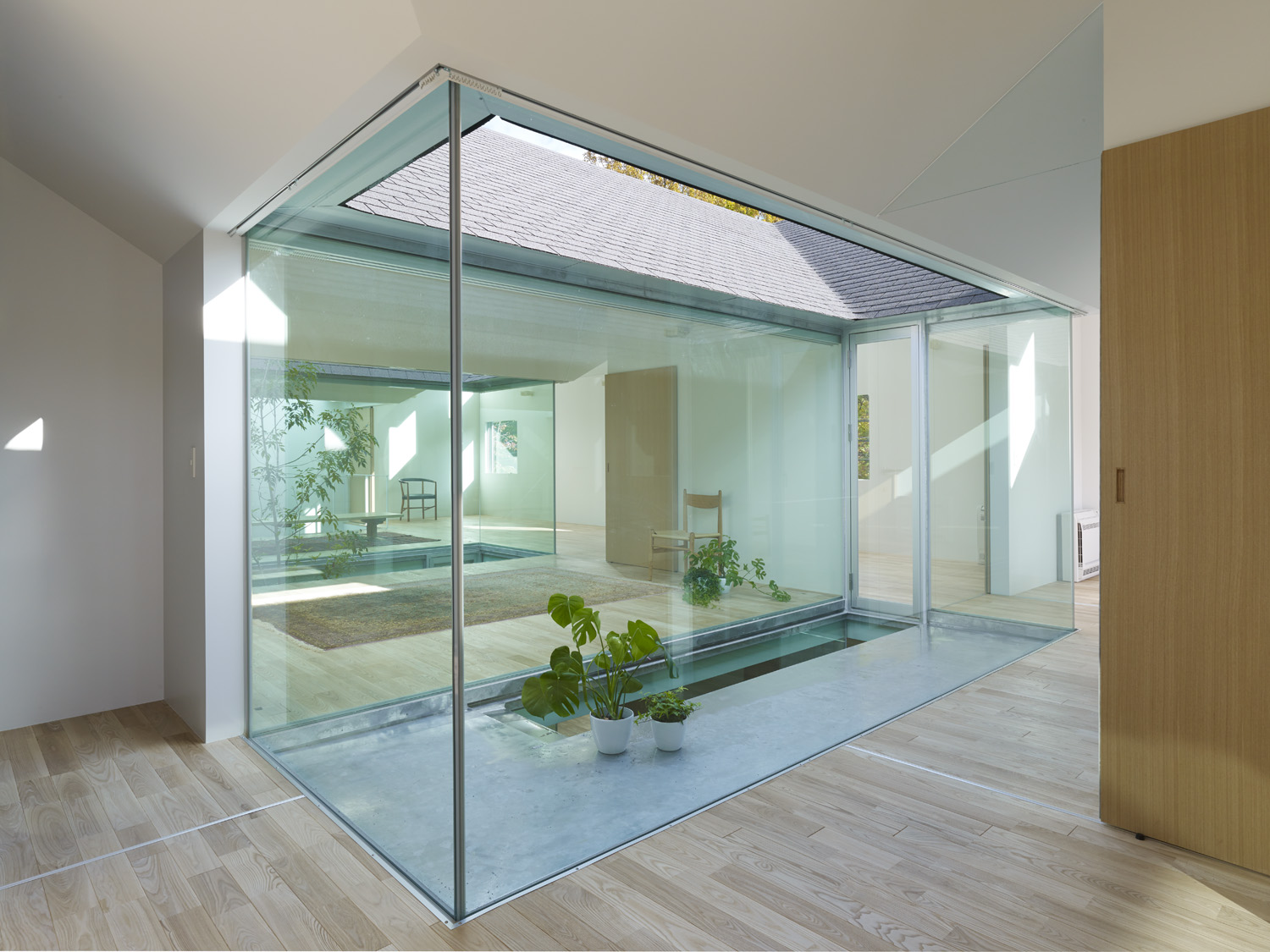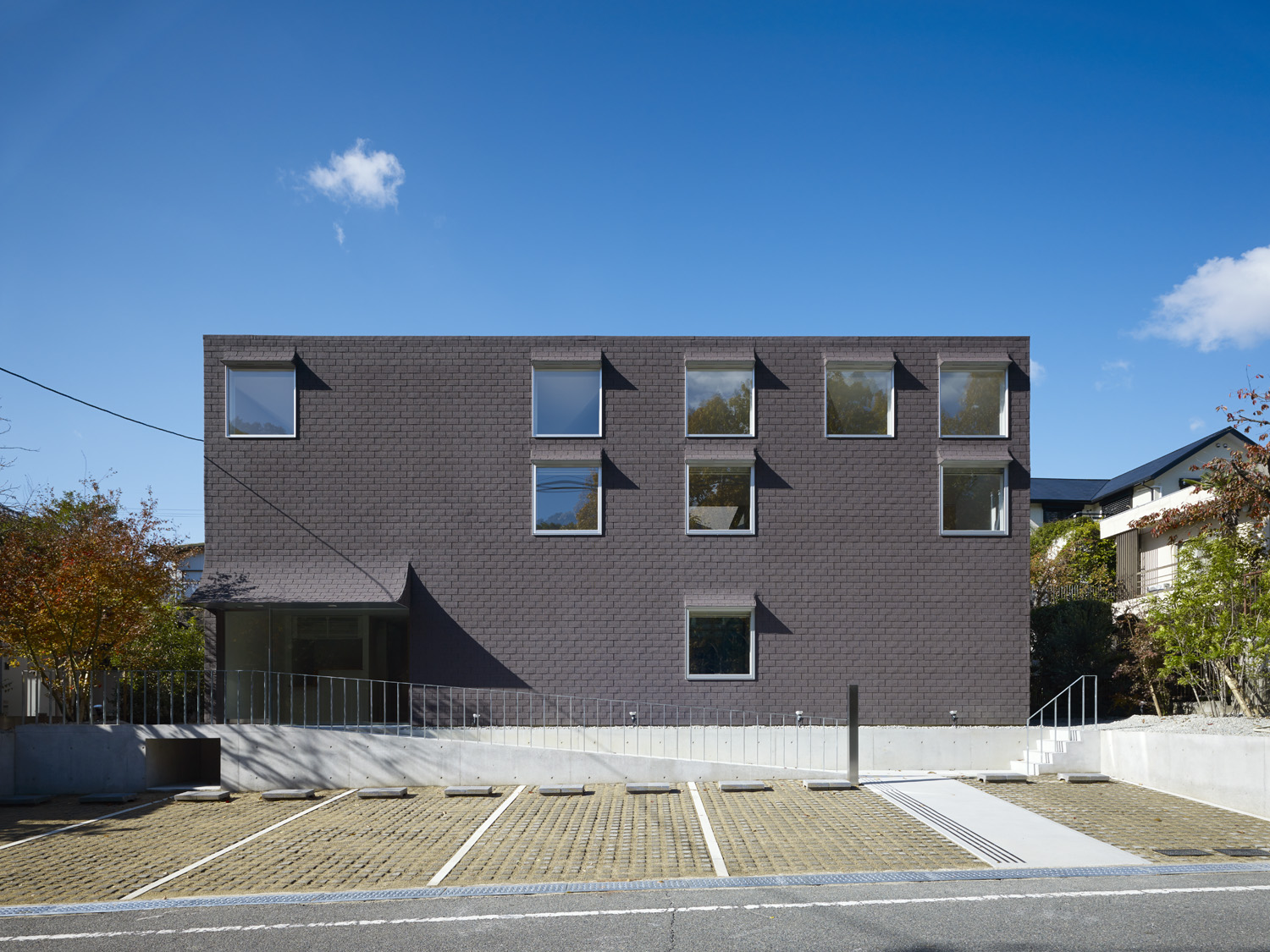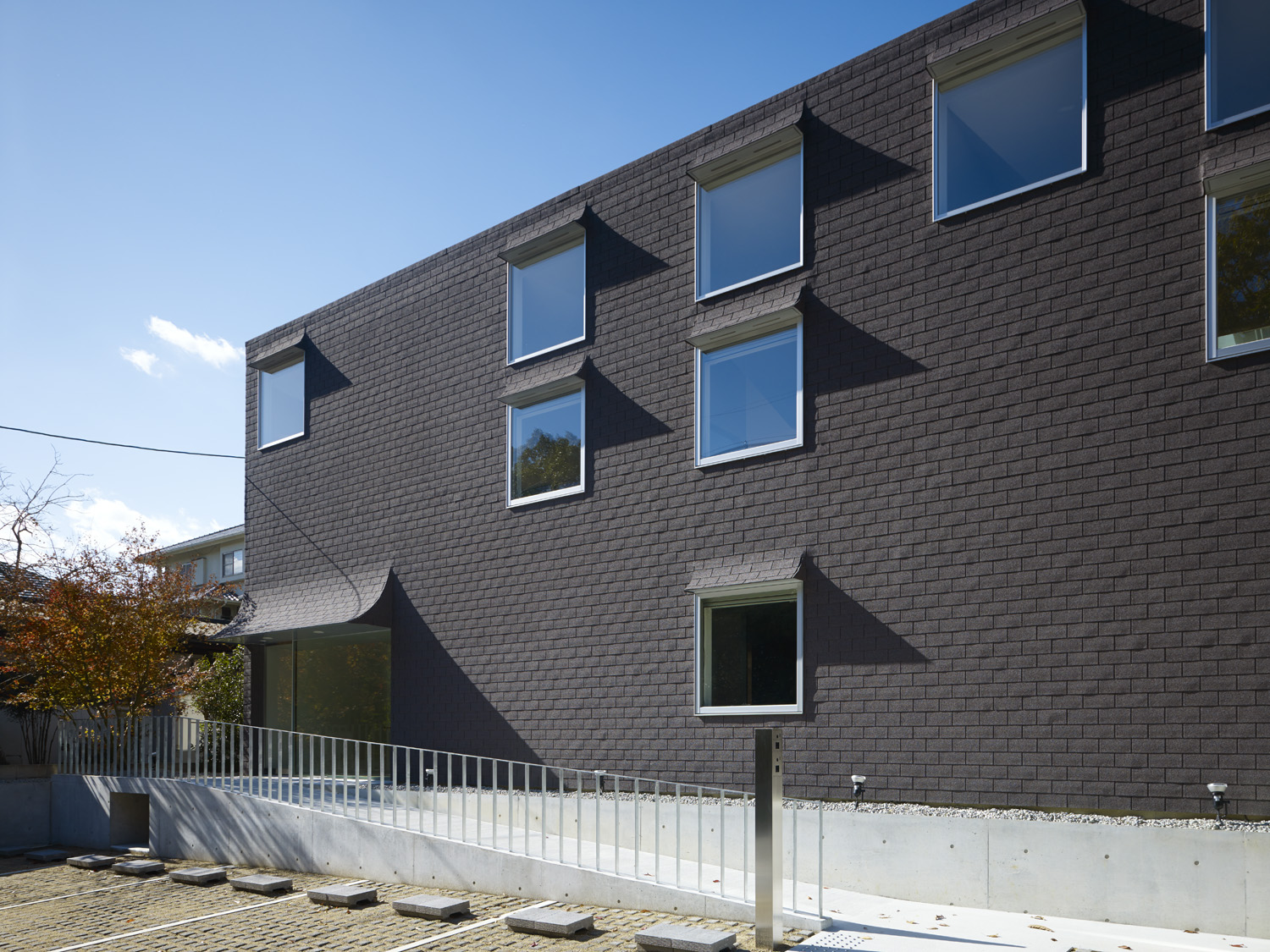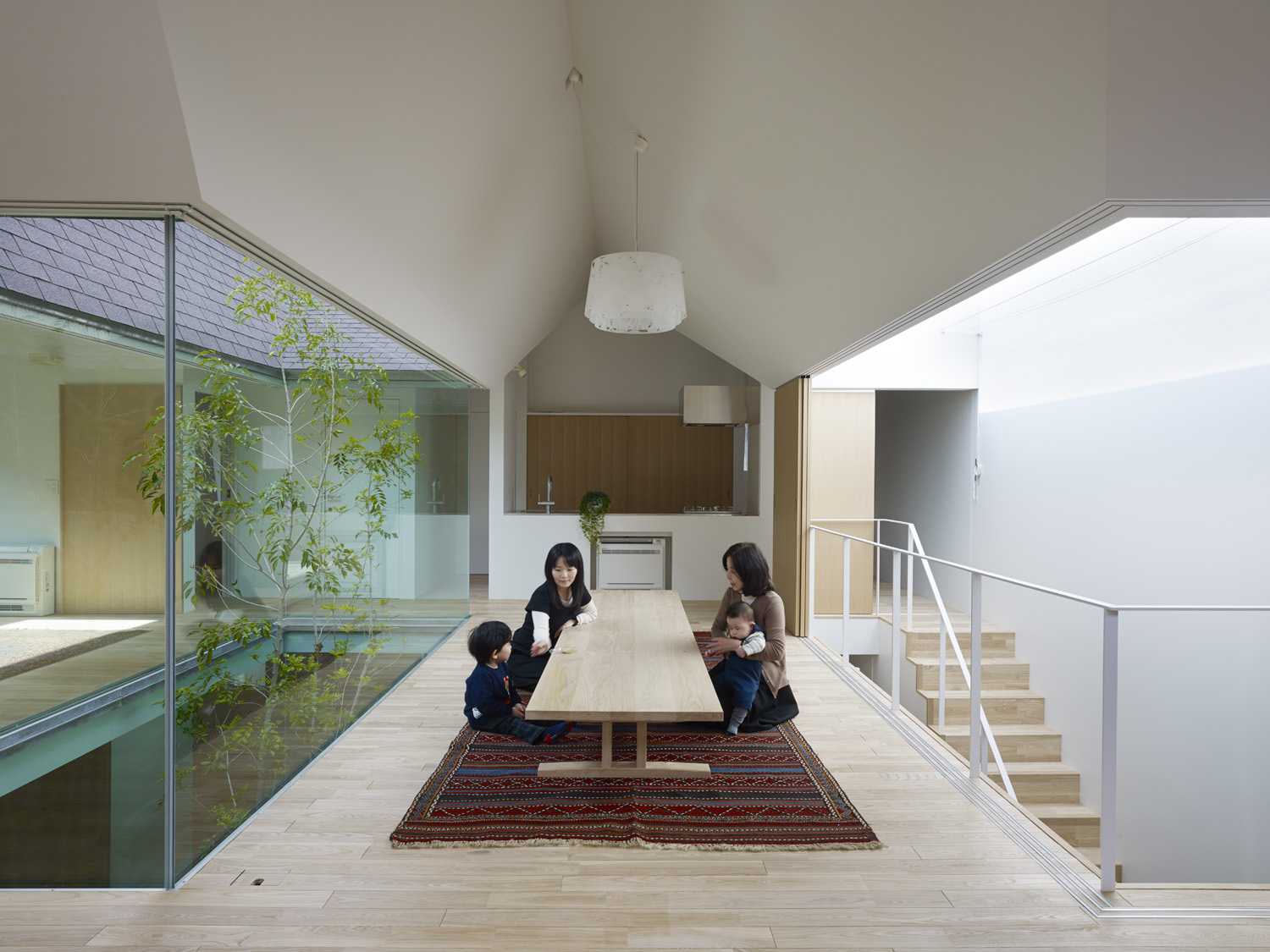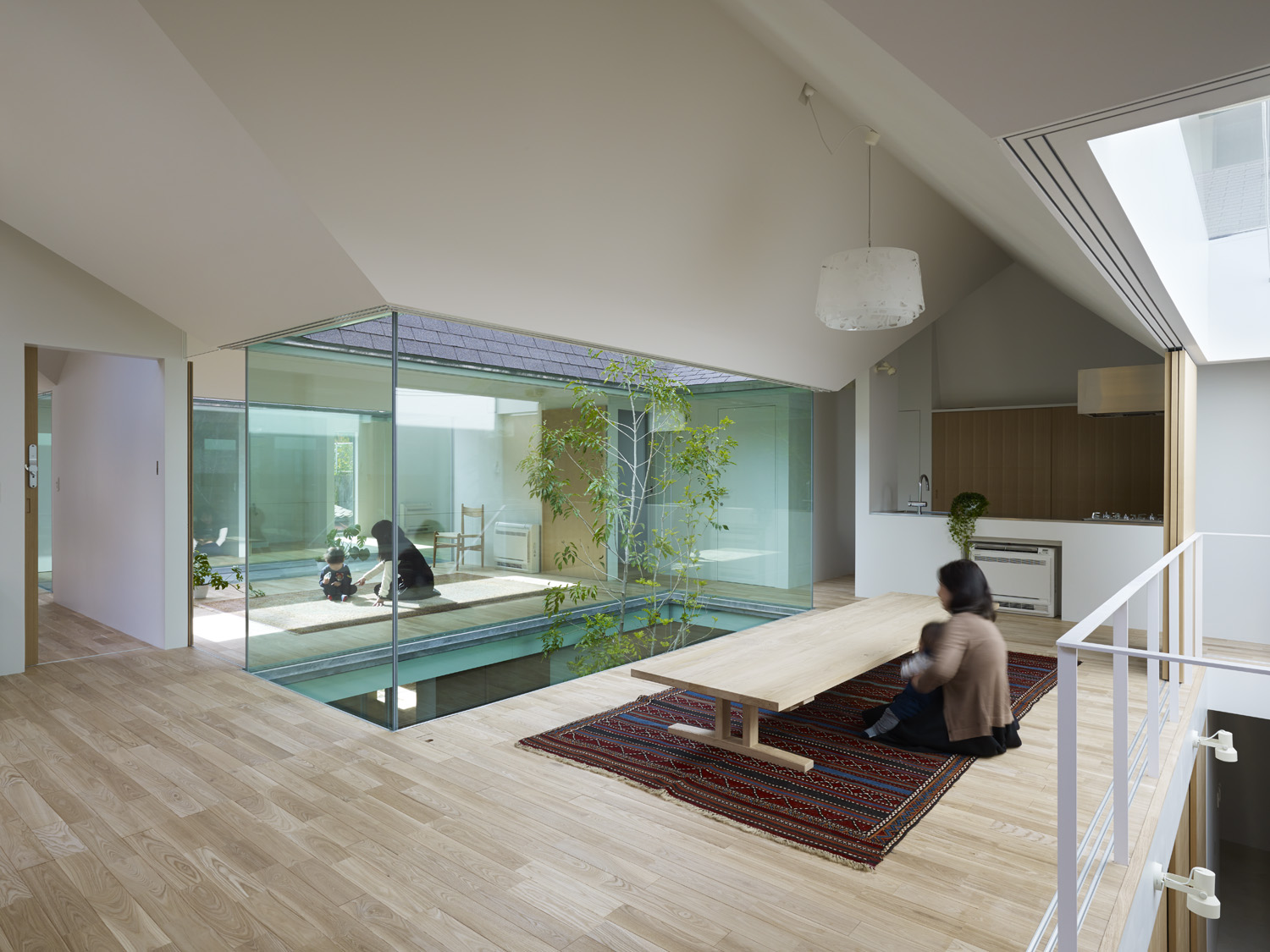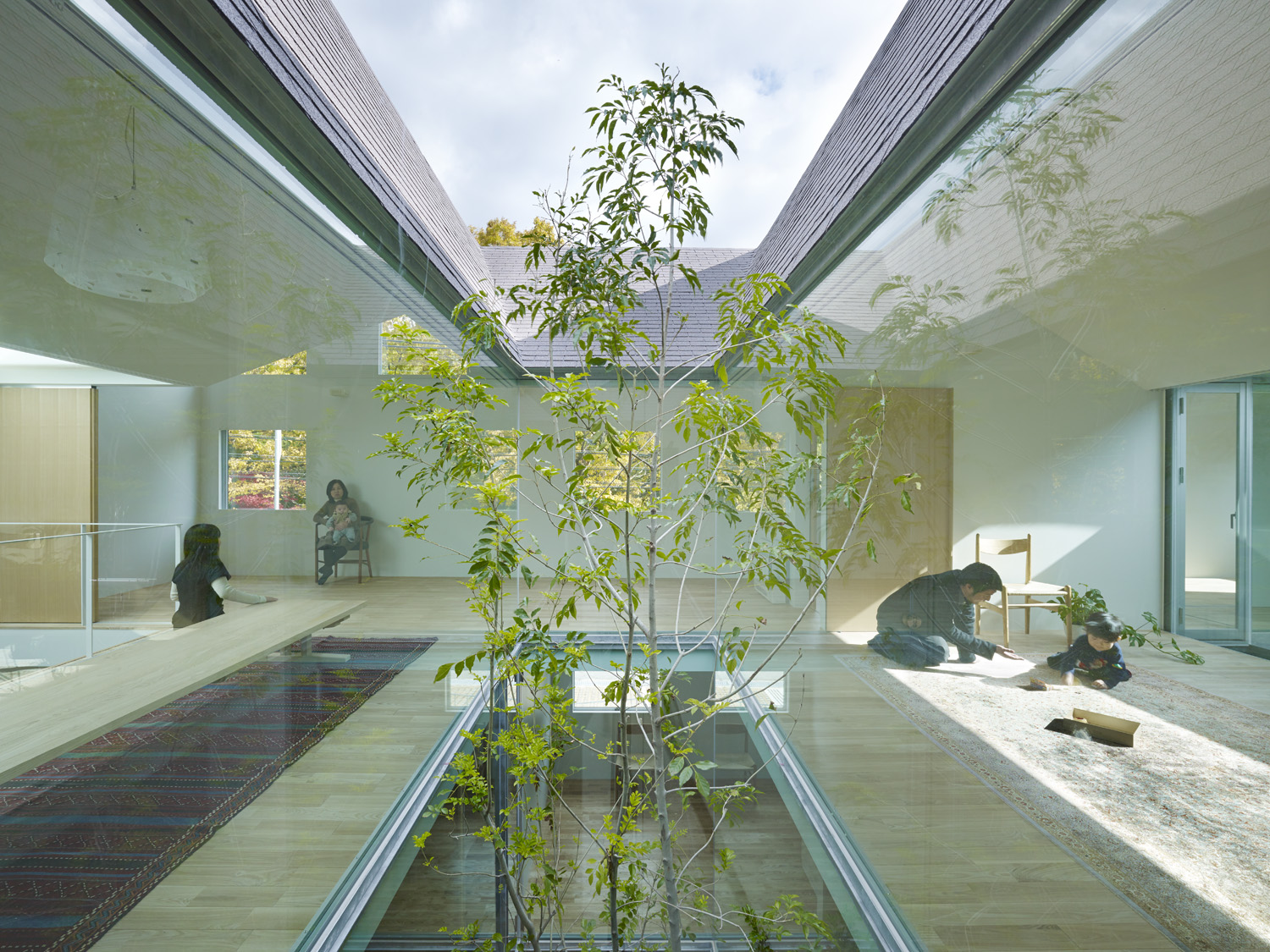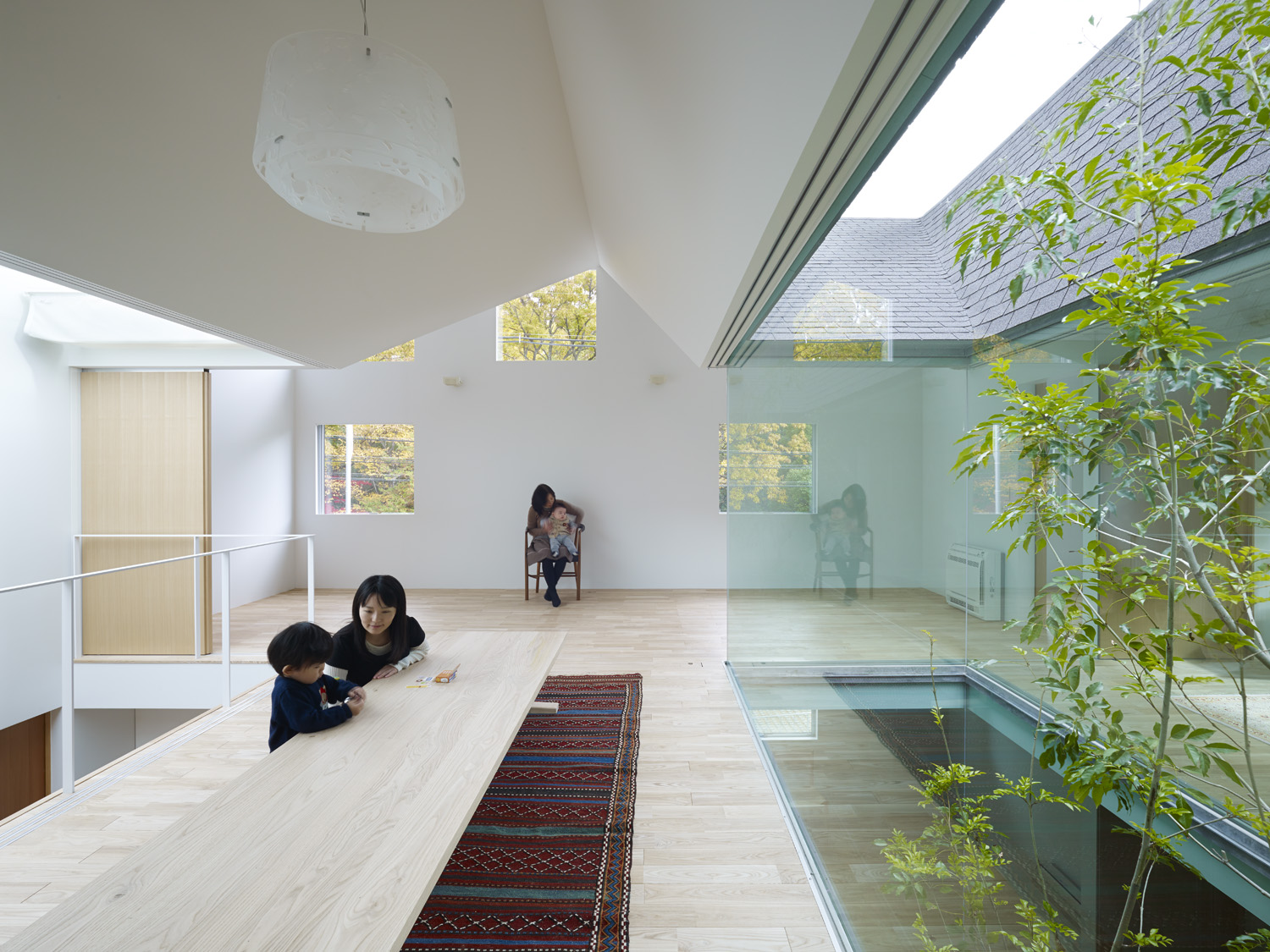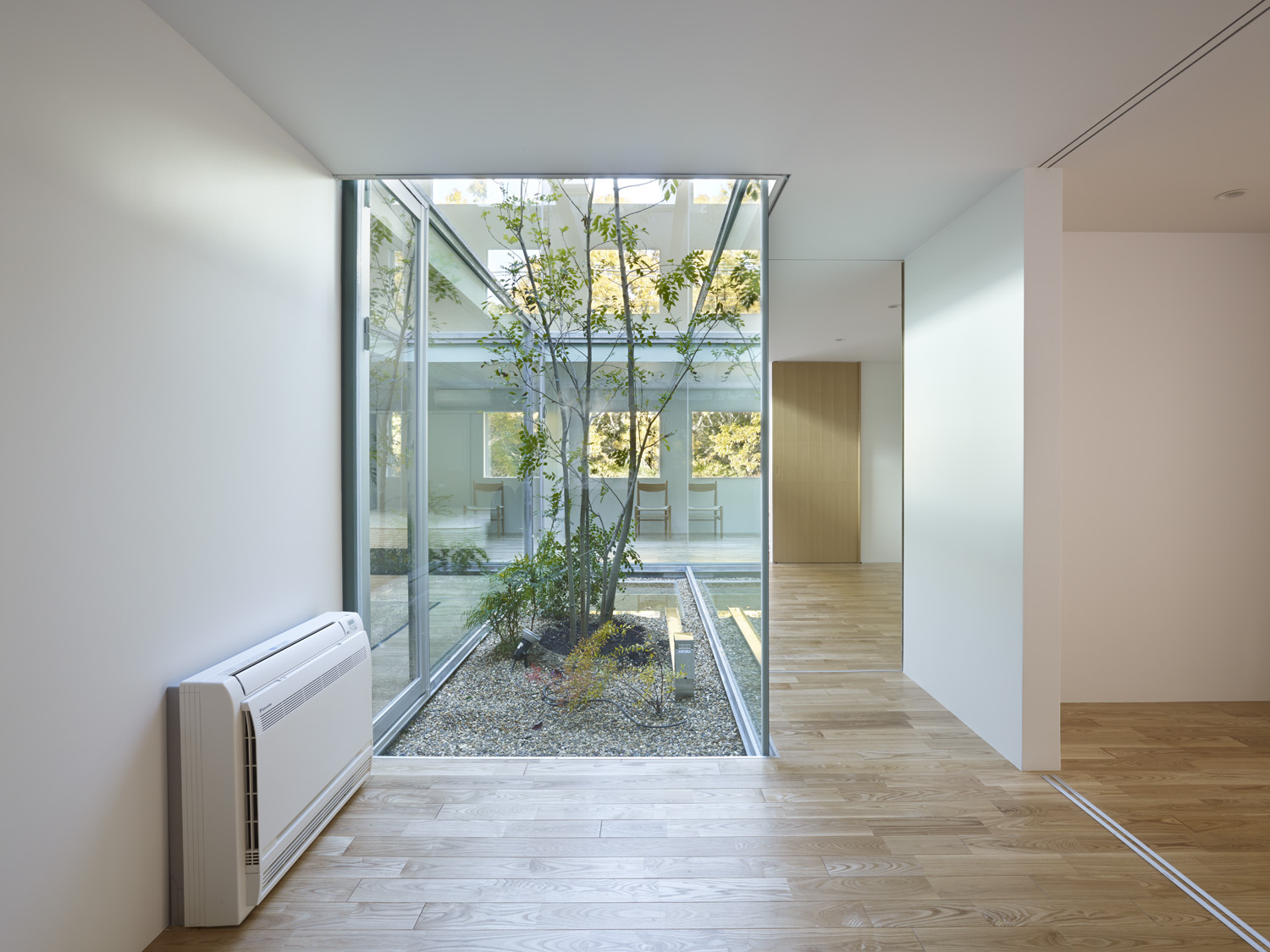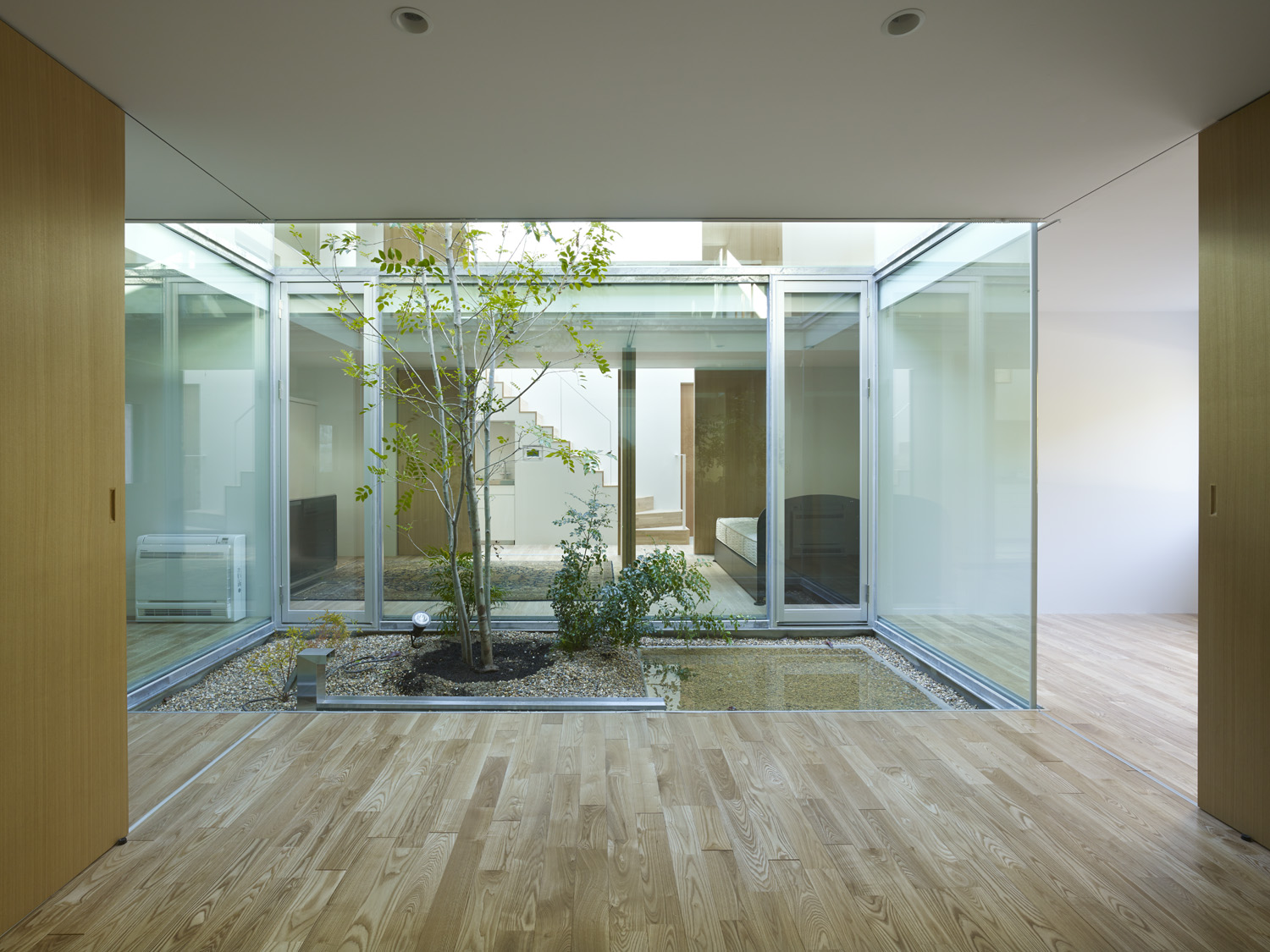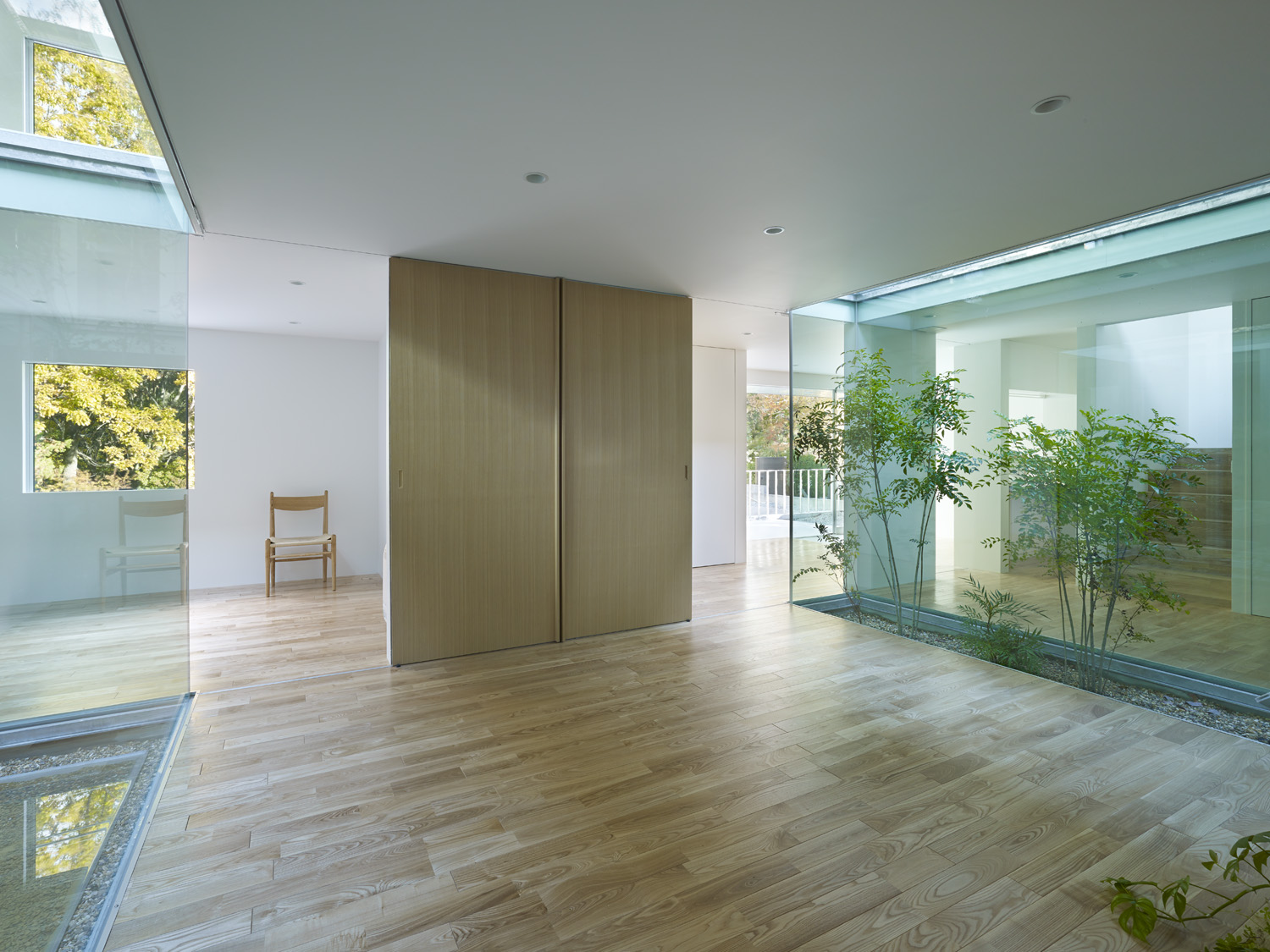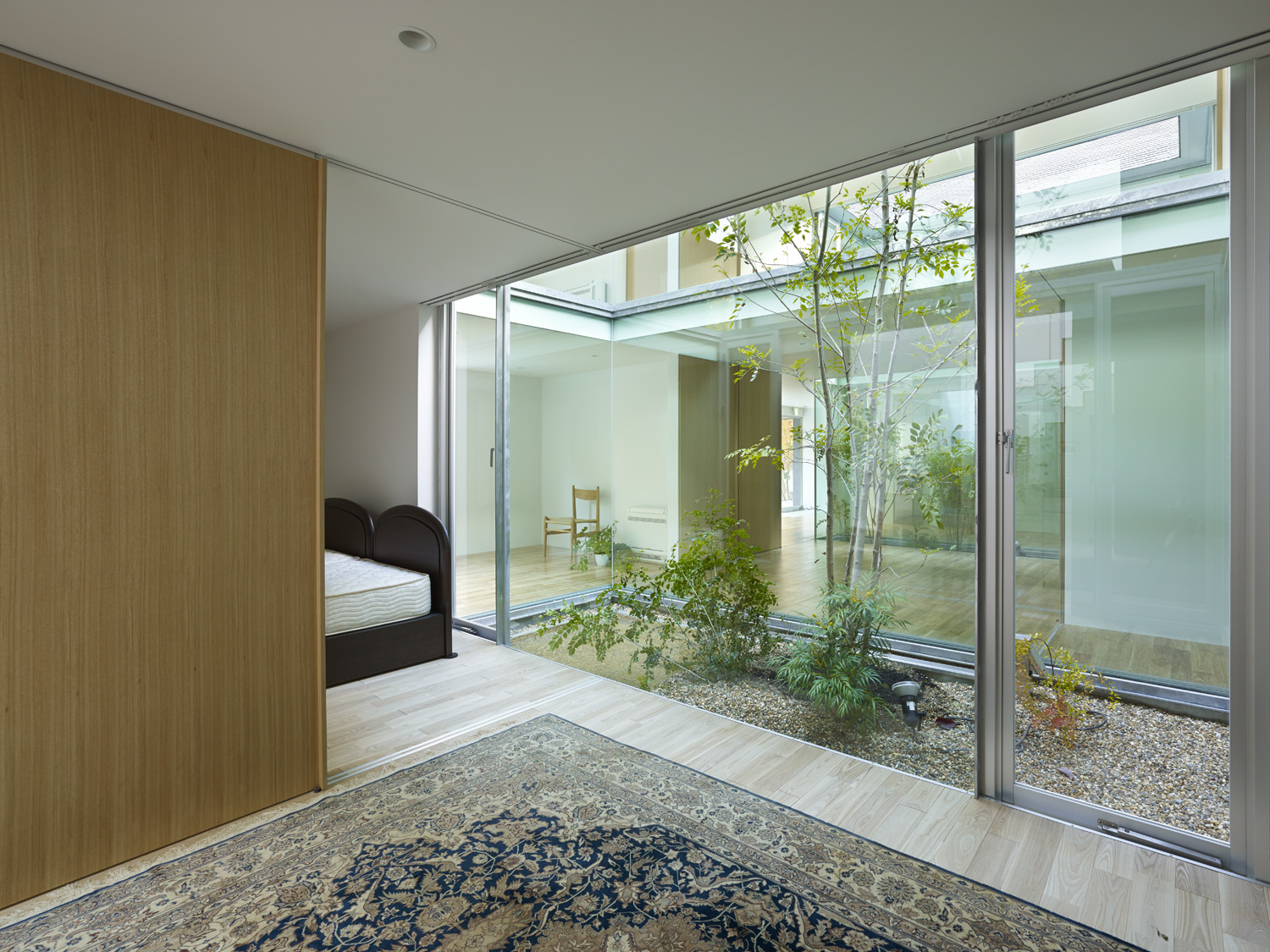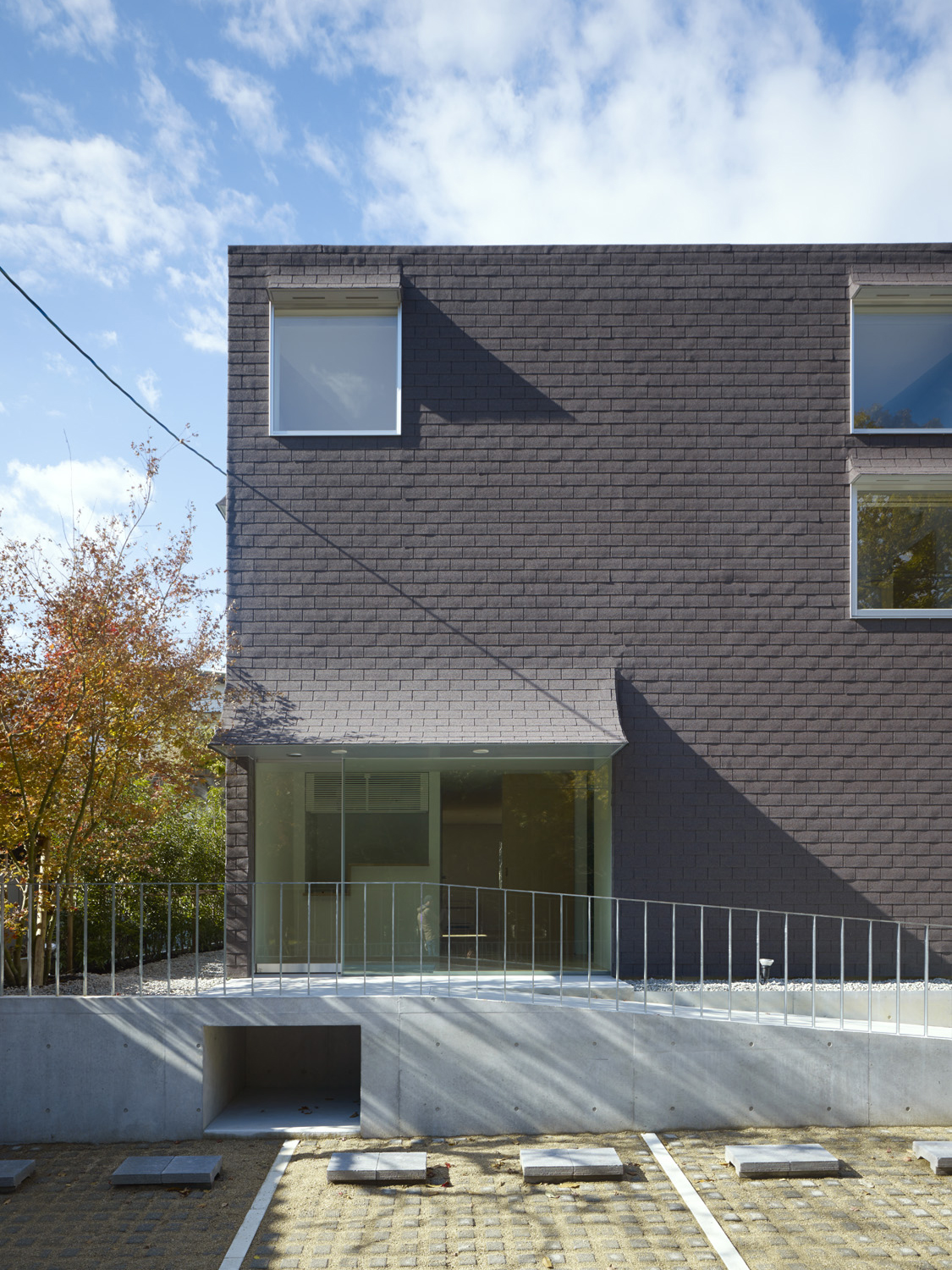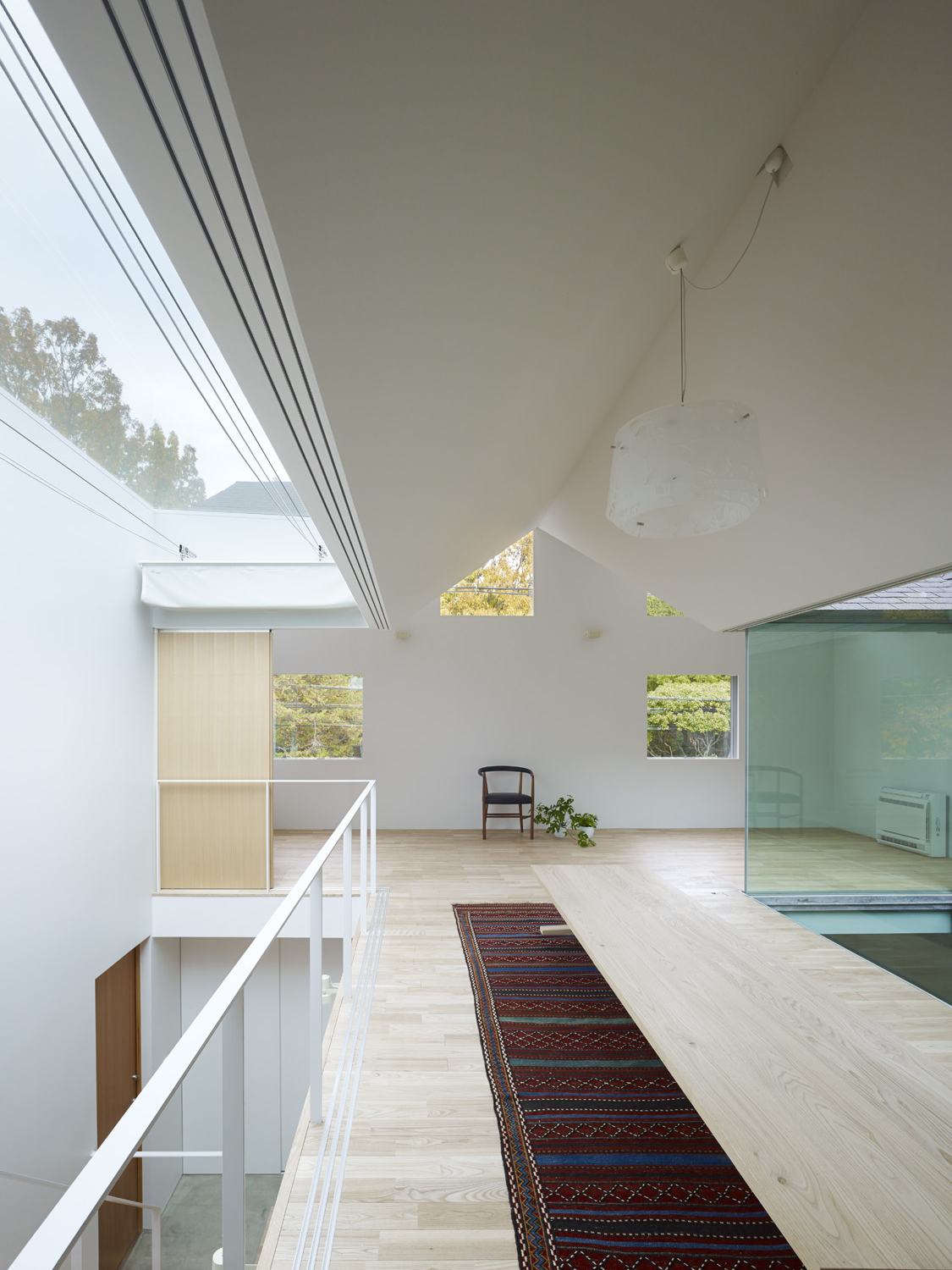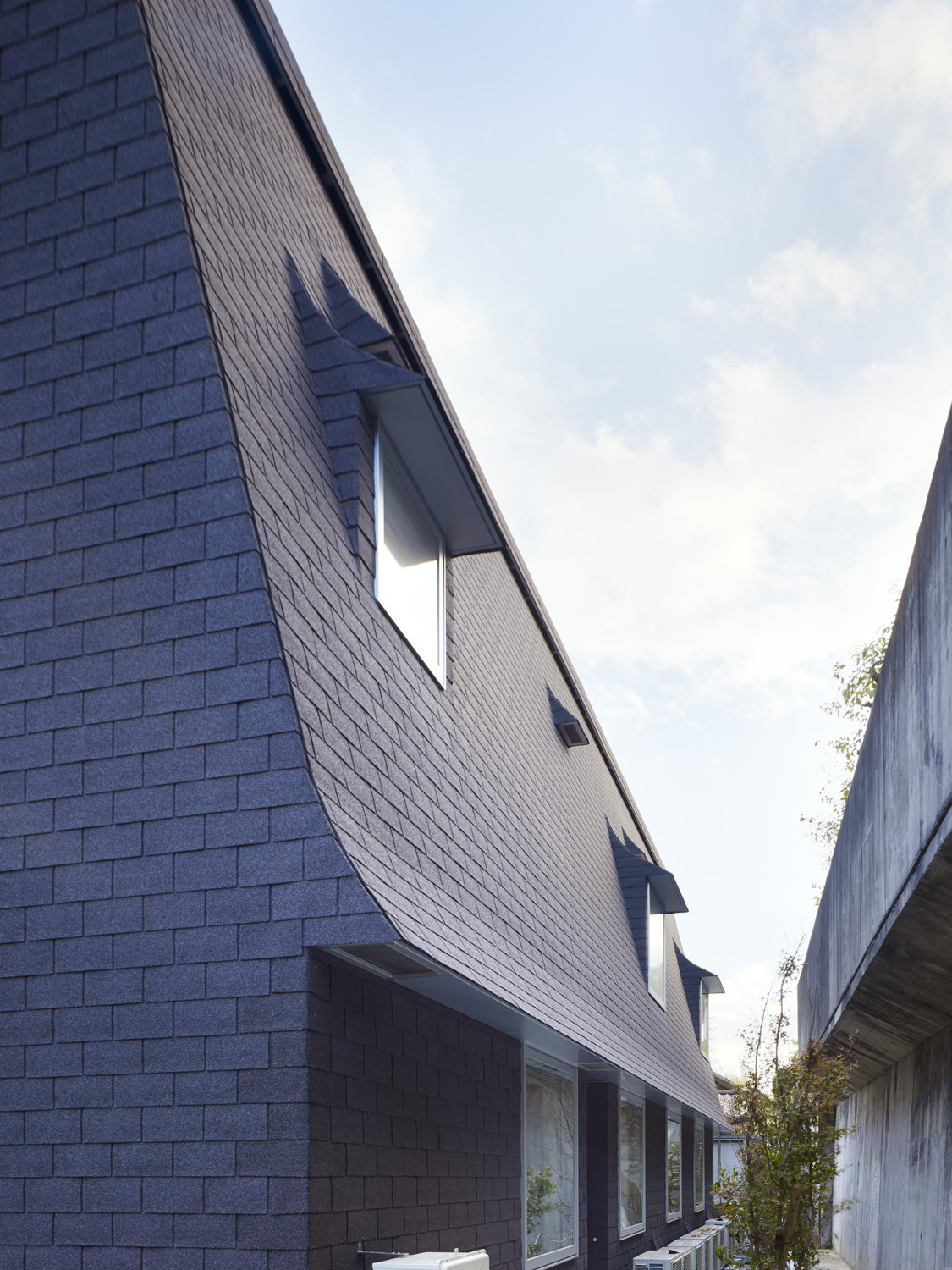作品
藤白台の家
- 専用住宅
設計、工事監理:畑友洋建築設計事務所
構造設計:萬田隆構造設計事務所
古来より、日本の住まいには特別な意味を持った建築言語が用いられてきた。例えば床の間は、物を飾る機能を超え、その存在によって上座、下座と形容される目に見えないプランニングを浮かび上がらせる。その中でも大黒柱の持つ意味は興味深く、通常構造的機能を超え、一家の主人を表す比喩となるように、時に土間と座敷の境界を表し、時に家の中心を象徴し、その周りに方位を合わせ、見えないプランニングを浮かび上がらせる。 この建築は、3本の大黒柱によって立ち上がる。大黒柱は「空」に満ち、荷重を支えるものではなく、天空に繋がる「虚の大黒柱」であり、言わば天空を支えるアトラースである。「虚の大黒柱」を拠り所とし、住居及び診療所諸室の区分や配置は、その力のままに、それらを取り巻くように周囲にプランニングされていく。大黒柱が浮かび上がらせる見えないプランニングをなぞるように。
“The empty main pillars leading to the sky”.
Architectural languages with symbolic meaning have
been used for Japanese homes since ancient times. For
example Tokonoma, referring to a built-in recessed
space in a Japanese-style reception room, highlights invisible
planning described as the upper and lower seat by
its presence beyond the ability to decorate things.
The meaning of a main pillar is interesting among
these symbols. The main pillar emerges as invisible planning
beyond its structural function, generally as a metaphor
representing the head of the family, sometimes
representing the boundaries between an earth floor and
a room floored with tatami mats, sometimes symbolizing
the center of a house and orienting the direction
around the pillar.
Examples which expose “the meaning” of these architectural
languages and retranslates them into abstract
language have become mainstream in contemporary architecture.
However we would like to think of the possibilities
of an architecture which recovers the belief in
the power of this “meaning” which is almost lost.
This architecture is supported by three main pillars.
The main pillars are therefore called “Atlas” as they support
the sky, and the “empty main pillars leading to the sky” as
they are full of “emptiness”, without supporting load.
Based on “the empty main pillars”, classification and
arrangement of the home as well as the medical office
and rooms are planned to surround them and follow
their power.
Just like tracing the invisible planning that emerges
from the main pillars.

